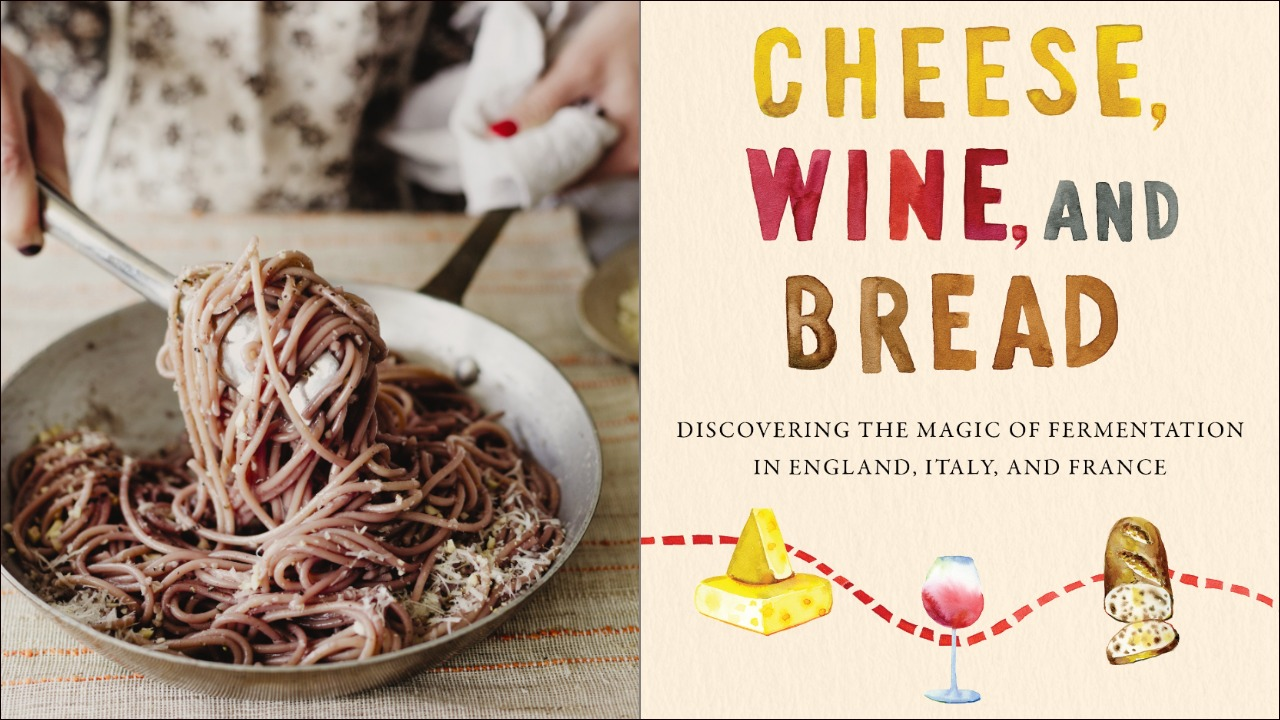Consider This Recipe For Drunken Spaghetti An Italian Souvenir
The existence of cheese, wine, and bread are the strongest arguments in favor of God's existence. Author/YouTuber/podcaster Katie Quinn knows this, and so she let the spirits of all three three guide her to Europe, where she immersed herself in each one. In her new cookbook Cheese, Wine, and Bread: Discovering the Magic of Fermentation in England, Italy, and France, Quinn shares everything she learned in her travels, along with plenty of recipes to help you live vicariously through her adventures. In England she becomes a cheesemonger at London's preeminent cheese shop, works at a goat farm in rural Somerset, and drives through the countryside searching for innovating dairy gurus. In France she apprentices at Parisian boulangeries, learning about bread and grains from some of the country's most lauded bakers, millers, and farmers. And in Italy, she not only explores the ins and outs of wine making at a family-owned vineyard, but discovers the joy of spaghetti all'ubriaco, or "drunken" pasta cooked in red wine. This book will leave you wondering why you've never run off to Europe to fulfill your culinary dreams, if you weren't wondering that already.
Drunken Spaghetti
Reprinted with permission from Cheese, Wine, and Bread: Discovering the Magic of Fermentation in England, Italy, and France by Katie Quinn (HarperCollins, 2021)
When Italians discovered the joy of using their favorite beverage (wine) to cook their favorite food (pasta), variations of this plum-colored pasta dish became a standard meal. Spaghetti all'ubriaco—"drunken spaghetti"—isn't as inebriated as it sounds: the heat burns off the alcohol in the wine. In cooking the pasta with the wine, however, the noodles are imbued with a subtle sweetness and depth of flavor. A medium-bodied dry red wine works well here, but honestly, I've used a wide variety of leftover reds. (The origin of this dish is considered to be Tuscany, so if you want to stay regional, you could uncork a Chianti or some other wine made primarily with sangiovese grapes, one of the most important grapes in Italy and grown abundantly in Tuscany.) Ideally, it would be a delicious red wine you would happily drink—and sometimes I do pour myself a glass and cook with the rest—but I also think the adage "Waste not, want not" is perfectly applied here: if you have an opened bottle that's past its prime for drinking, this is the perfect use for it.
I make this version with nuts, cheese, herbs, garlic, and red pepper flakes. I love garlic, so I use a lot. If you don't love a garlicky pasta, use fewer cloves. Ditto with the red pepper flakes. These simple ingredients are all you need to put together an addicting, lip-smacking plate of pasta. I find these deep-plum strands of spaghetti completely irresistible, as sexy as a satin sheet.
- Coarse sea salt
- 12 ounces (340 grams) dried spaghetti
- 1/4 cup (60 milliliters) extra-virgin olive oil
- 4 small garlic cloves, thinly sliced
- 1/2 teaspoon red pepper flakes
- 1 cup (250 milliliters) red wine
- 1/2 cup (1.6 ounces/45 grams) freshly grated Pecorino Romano cheese, plus more for serving
- 1/4 cup (45 grams) finely chopped nuts (I like pine nuts, walnuts, or almonds)
- 1/8 teaspoon freshly grated nutmeg
- Fine sea salt and freshly ground black pepper
- Sprigs of parsley, for garnish
Fill a large pot three-quarters full of water and bring it to a boil over medium-high heat. Add a generous amount of coarse salt (the adage "It should taste like the sea" is a good gauge of how much). Cook the spaghetti for 2 minutes less than the instructions on the package for al dente. (You don't want it to be completely cooked because it will continue cooking in the red wine later.)
While the pasta is cooking, heat the olive oil in a large, high-sided pan over medium-low heat. Add the garlic and red pepper flakes and cook, stirring, for 1 minute, or until the garlic becomes fragrant. Pour the wine into the pan with the garlic and stir. Remove from the heat while the pasta finishes cooking.
Drain the pasta, reserving 1 cup (about 250 milliliters) of the pasta water.
Add the pasta to the pan with the wine and garlic over medium heat and stir. Cook, occasionally stirring gently, for 2 minutes, or until the pasta is al dente and has absorbed most of the wine, taking on a plum hue.
Remove the pan from the heat and mix in the cheese and nuts. Stir in a tablespoon (or more) of the reserved pasta water; its starchiness mixes with the fat in the cheese to create a silky coating on the noodles. Finish with the nutmeg, season with salt and pepper, and stir to incorporate well. Taste and adjust the seasoning if you think the dish is asking for it.
Serve garnished with parsley and topped with more cheese, and enjoy slurping down the drunken noodles.
